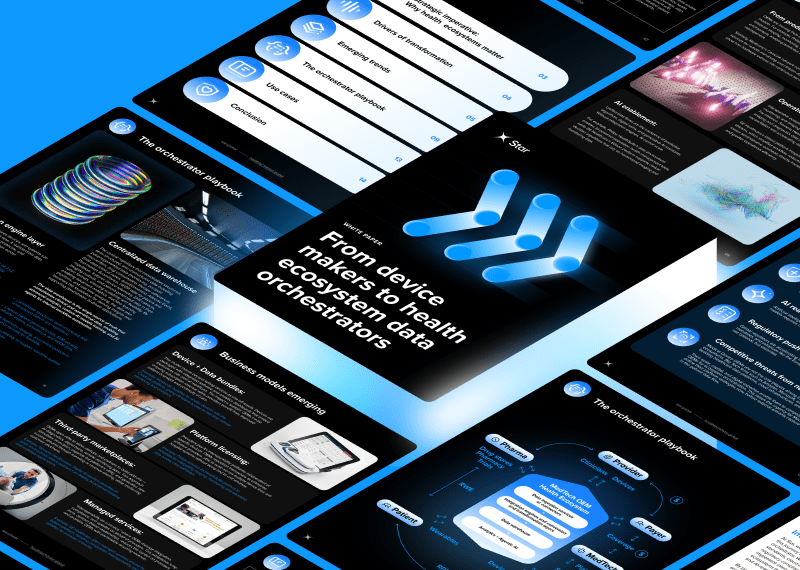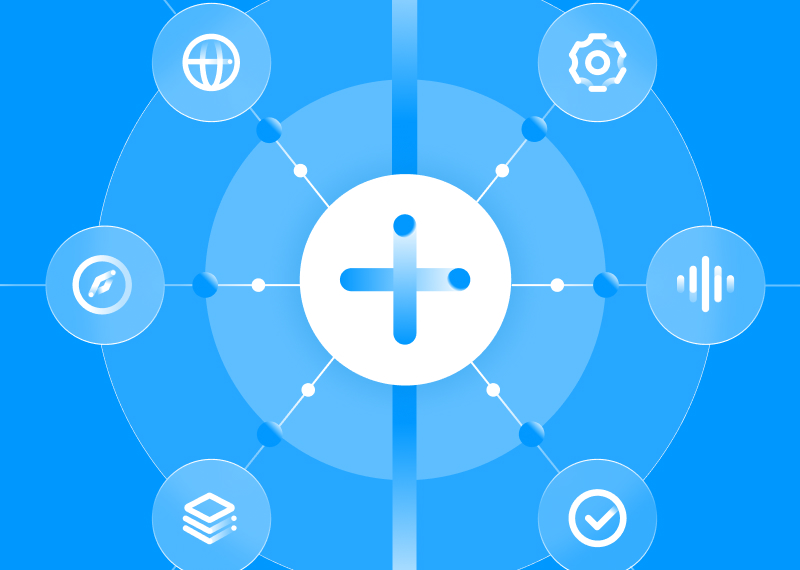In healthcare, the ability to connect systems and share information across different technologies is critical to delivering effective, efficient, and accurate patient care. Interoperability – bringing electronic health records (EHRs), clinical systems, medical devices, and telehealth platforms into a single, connected ecosystem – is becoming a must. However, the journey toward fully integrated healthcare systems poses significant challenges. As Pavel Kyrylchenko, Senior Program Manager, and Yanick Gaudet, Principal Interoperability Solution Architect at Star, discuss, implementing interoperability standards like FHIR, HL7, and SMART on FHIR can help healthcare providers, MedTech companies, and healthcare IT leaders look with confidence toward a regulated interoperability future and integrated healthcare systems.
This webinar recap dives into practical strategies that enable seamless data integration across healthcare systems. We'll explore interoperability’s role in modern healthcare, discuss integration strategies for legacy and new systems, the importance of data management, and outline essential planning steps to make interoperability a success.
Why interoperability is essential in healthcare
For healthcare providers, fragmented data sources are a daily frustration, causing inefficiencies and impacting the quality of patient care. Each data system has unique data formats and standards, requiring specialized connections and conversions to ensure information is accessible across platforms.
For MedTech leaders, the true value of medical devices is only realized when the data they produce can seamlessly integrate into clinical workflows. Without interoperability, even the most innovative devices risk becoming standalone tools with limited real-world impact.
For pharmaceutical leaders, leveraging interoperable data from their partners enables them to perform analytics at scale on their products' clinical outcomes in the real world and during medical trials, better understand processes and diagnostic efficiencies and gaps.
For healthcare IT leaders, interoperability is vital to reducing downtime, troubleshooting errors, and maintaining robust systems. They are constantly balancing the needs of healthcare providers and MedTech leaders with the limitations of legacy systems and the demands of new technology. Proper interoperability reduces the burden of manual monitoring and data handling, creating a more resilient IT infrastructure.
Government initiatives worldwide are increasingly pushing for mandatory interoperability in healthcare to oversee population health, improve patient outcomes, streamline care, and reduce costs at a national level across various providers. These government-backed mandates are compelling healthcare organizations to accelerate interoperability adoption and ensure compliance with strict timelines, bringing industry-wide alignment on technical standards and driving forward innovation and efficiency across healthcare ecosystems.
Implementing interoperability: Meeting different needs and tech constraints
Interoperability isn’t a one-size-fits-all solution. Healthcare organizations must evaluate their unique needs, tech constraints, system types, and data requirements to determine the best approach. Below, we briefly explore the strategies for achieving interoperability in legacy systems, new systems, and medical devices.
Integrating legacy systems
Many healthcare organizations rely on long-established systems, often built on HL7 Version 2 standards, that continue to manage patient data. Replacing these legacy systems entirely to adopt modern standards like FHIR is often cost-prohibitive. As Yanick Gaudet suggests, a more practical approach is to use a “bridging box” that enables HL7 V2 systems to convert data to FHIR and vice versa. This bridging mechanism minimizes the need to alter existing infrastructure, allowing legacy systems to operate while enabling more modern data exchanges.
Benefits of bridging legacy systems:
- Reduces costs and risks associated with a complete system overhaul.
- Allows for incremental adoption of new interoperability standards.
- Minimizes disruptions to existing clinical workflows.
Building new systems with FHIR standards
For organizations developing new systems, adopting a FHIR-first approach is often the best strategy. Designing a system around FHIR's resources model or dual model to various extend ensures it will be compatible with current interoperability standards. FHIR’s structured format facilitates the organization and exchange of data, making it easier to integrate with existing healthcare systems and reduce potential complications in the future.
Key advantages of FHIR-first design:
- Ensures compliance with modern interoperability standards.
- Simplifies future integrations with healthcare networks.
- Supports the scalability and adaptability of new data systems.
Interoperability in SaMD: Driving innovation and data management
Software as a medical device (SaMD) has become a vital component in healthcare, enabling devices to provide actionable insights and valuable patient data in real-time. However, the value of SaMD lies not only in the data it collects but also in its ability to seamlessly share this data across healthcare systems. By implementing interoperability standards such as SMART on FHIR, MedTech companies can ensure their devices are usable within hospital systems, enabling healthcare providers to leverage the data in clinical decision-making.
SaMD interoperability benefits:
- Increases device adoption by aligning with healthcare providers’ data needs.
- Boosts device utilization by making data accessible within clinical workflows.
- Improves patient outcomes by enabling more informed, data-driven decisions.
Data management and analysis in interoperable systems
While FHIR and HL7 standards are essential for data exchange, they are not necessarily optimized for advanced data analytics or AI applications. Healthcare organizations often need to analyze large datasets to improve patient outcomes, optimize operations, and develop predictive models. However, the structured nature of healthcare data can pose challenges for analysis.
Yanick explains that organizations can manage this by exporting their data to a “flattened” format more suitable for analytics platforms. This conversion allows healthcare organizations to derive valuable insights from complex data without sacrificing the benefits of HL7 or FHIR interoperability for data sharing.
Best practices for data management and analysis:
- Use NoSQL databases for real time data handling in FHIR formats.
- Export data to a flattened structure for in-depth analysis, AI, and machine learning.
- Implement data pipelines that support both operational needs and advanced research.
Planning for interoperability success
Achieving true interoperability in healthcare isn’t just about connecting systems. Effective planning is essential to create a sustainable, scalable, and resilient integration strategy. Pavel and Yanick emphasize several critical steps in the planning process to ensure that interoperability efforts align with organizational needs and long-term goals.
The first step in planning interoperability is to understand the specific goals and use cases that interoperability will address and how it aligns with the organization's strategy and business goals. Healthcare providers, MedTech companies, and IT leaders must collaborate to identify the core challenges they want to solve – whether it’s streamlining clinical workflows, enabling device data sharing, or enhancing IT system reliability. Each organization’s priorities will influence the types of standards and tools best suited to their needs.

Whether you are a healthcare provider, MedTech company, or pharmaceutical organization, we help you build a scalable, future-proof interoperability strategy.
Realizing the benefits of healthcare interoperability
Interoperability is a crucial component of a connected, efficient, and patient-centered healthcare system. By implementing standards like HL7, FHIR, and SMART on FHIR, healthcare providers can streamline clinical workflows, MedTech companies can maximize the impact of their devices, and healthcare IT leaders can maintain more robust and resilient systems.
Whether adapting legacy systems, building new platforms, or integrating SaMD, a well-planned approach to interoperability enables healthcare organizations to manage data effectively, and ultimately improve patient outcomes. By strategically aligning business and interoperability goals with the tailored implementation and technology, organizations can create a connected healthcare environment that supports both current operations and future innovation.









